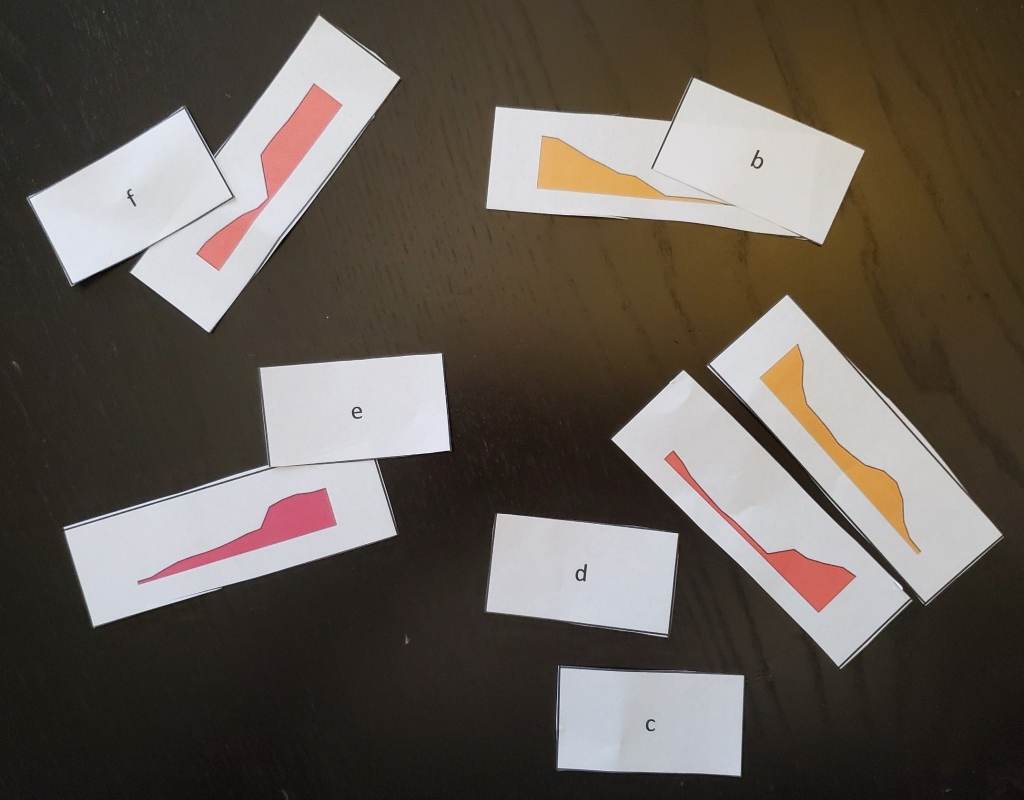Whenever and however we come back together as math classes this Fall, we’re going to need to spend considerable time building up students’ mathematical identities. Chances are students are going to be entering your classroom with a wider array of math learning experiences over the prior six months than ever before. Therefore we need a cache of absolutely accessible math tasks with opportunity for robust student discourse (low floor, high ceiling tasks). I think this task – or some version of it – can contribute.
This infographic shows the distribution of English letters and where they are located in words.

(You can find the methodology here. There are some interesting tidbits to note, including the fact that the words are accumulated from a text corpus, rather than a dictionary. That means that the analysis takes into account how often the words are used. The example the author gives is that “the” influences the distribution much more than “theocratic.”)
(Another note: I don’t recommend leading off with the phrase “text corpus” if you’re trying to showcase a low floor task.)
There are lots of fun things to notice. It’s interesting (to me) that ‘x’ occurs near the beginning of every word it’s in, but rarely is it ever the first letter. A lot of these distributions are even intuitive. For example, it makes sense that there would be a lot of ‘e’s at the end of words (especially considering how common “the” is). It also makes sense that we see a lot of ‘s’s at the end of words.
This infographic combines mane of the things I look for in a quality task.
- The math is robust, but doesn’t get too hung up on the numbers
- Much of it meshes with intuition
- It combines math and literacy
- It’s accessible by native English speakers and English Language Learners (more on that in a moment)
- It’s highly visual
It makes sense to turn this into a card sort.

I wouldn’t recommend just tossing all letters together for a mega-card sort of 26 matching pairs. I’d recommend perhaps 5-6 matches at a time. You can just take them alphabetically, or pick your favorite 5-6.
I also wouldn’t recommend just kicking off with a card sort. There needs to be some processessning and sensemaking to ensure that everyone knows what they’re looking at. I’ll offer the following suggested lesson plan, but feel free to comment how you’d tackle this open-access card sort.
Lesson: Letter Distribution
Launch. “Think about the letter ‘y’. Think about all the words that contain the letter ‘y’. If you were to take every word with the letter ‘y’ where would ‘y’ most often be? Toward the front? Toward the middle? Toward the end?”
Turn and Talk
Show distribution for letter ‘y’.

Now let’s think about ‘q.’
- With your group try to come up with as many words with the letter ‘q’ in it as possible.
- Where in each word does the letter ‘q’ sit?
- Make a quick distribution scatterplot/histogram with the words you chose. Example:

- Share your list and your histogram with another group.
Explore, Hand out a subset of cards for the card sort. If possible, have groups examine each other’s answers.

If students/groups are getting stuck, you may wish to reveal the little nugget that the colors are representative of their overall appearance in words. More red = more common.

Discuss. Debrief:
- Reflect on your group process. What was your group’s process?
- Celebrate a teammate who demonstrated a moment of brilliance.
- How did you work together? Did everyone have a say in contributing?
- Which norms did we excel at? Which did we not do as well at?
- Optional: Self-assess on a group collaboration rubric.
Show and discuss other examples of statistical distributions.
Epilogue
As I suggested earlier, I think this is a good activity for students learning the English language given that it allows students to draw upon the English they already know. However, I acknowledge it is English centric. If someone can point me to a similar analysis of a language other than English, that’d be fantastic. It also might be an opportunity for students with a native language other than English to share with the class how the distribution might differ in, say, Spanish. For example, I’d guess that ‘e’ would be more prevalent at the beginning of words such as estè.
For more on supporting English Language Learners, check out this post.
The Goods
Images and files (including examples and frequency hint) (Letter Distribution – All Files)
Also, here’s the activity in Desmos form, if that’s your jam: Letter Distribution Card Sort (Desmos)
